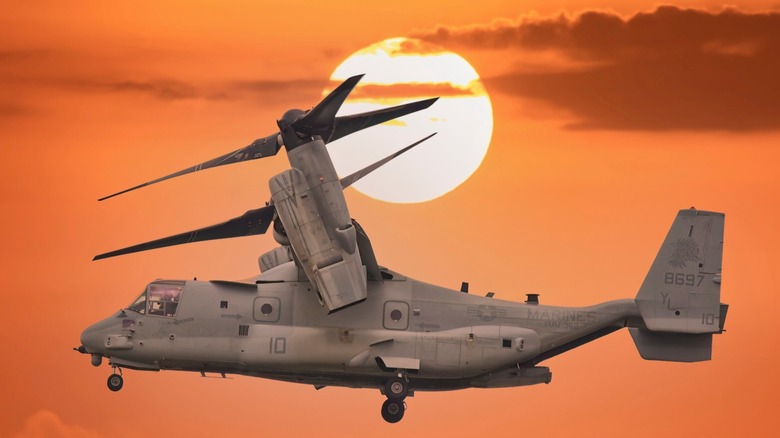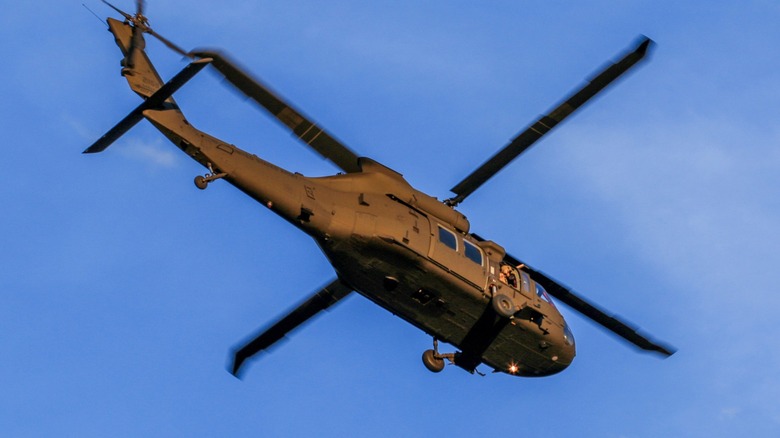What's The Difference Between Military And Civilian Helicopters?
We've all looked up at the sky to find a helicopter slicing through the clouds. But how many of those times could we really tell whether this chopper was military or civilian? At first glance, they can look pretty similar. Both have spinning blades, and the unmistakable echoing sound of them whirring overhead.
On one side, you've got the military choppers, which are by design rugged, intimidating, and built for war. Historically, there have been some truly iconic military helicopters. They're the flying tanks of the sky, armed with whatever you can imagine. Think missiles to radar jammers, and night vision tech. Their missions are classified. Whether it's dropping troops into danger zones, evacuating the wounded, or launching aerial assaults.
Then there's the civilian helicopter. The friendlier, lighter, and less explosive cousin of military choppers. Also equipped for carrying out certain missions. From reporting traffic to transporting hospital patients and even flying tourists over cityscapes.
So, what really sets them apart? Gear, missions, or rules? It's all of the above. Military and civilian helicopters operate on entirely different frequencies. That said, strap in to find out what the difference is between military and civilian helicopters.
What they're made of from frame to flight deckwhat they're made of from frame to flight deck
Military choppers are, as you might have guessed, all armored up. They make use of lightweight and durable materials like carbon fiber and Kevlar. Everything is built with stealth and survival in mind. Even the fuel tanks are crash-resistant. This is why it's not exaggerating it to say the introduction of the helicopter changed the U.S. Army forever. Features such as crew-operated door guns and air-to-ground missiles are a part of what makes the Black Hawk helicopter so special.
Civilian helicopters skip the armor and weapons in favor of comfort and luxury. They also use lightweight materials like aluminum alloy and fiberglass. This is done mainly to improve fuel efficiency and keep maintenance costs down. When you step inside, the contrast is very much more apparent. Their cabins are tailored for passengers, patients, or VIPs. You'll find plush seats, soundproofing, air conditioning, and even luxury finishes in high-end models. Everything inside is made to keep people comfortable, safe, and calm rather than combat-ready.
Who flies where and why it matters
There's another telling distinction between these types of helicopters. This is the regulatory oversight they are subject to, particularly when it comes to airspace use. Airspace is a lot like real estate. Location matters, and not everyone's invited everywhere. Civilian helicopters are bound by strict aviation regulations. They must follow the rules set by civil aviation bodies like the FAA in the U.S. or EASA in Europe. If you want to fly a private chopper over a city, you'll need a flight plan, approved routes, and air traffic control's blessing. Unauthorized flying results in pilot deviation, which is important to avoid. So those helicopters that take tourists over the Grand Canyon do so only within designated airspace.
Military helicopters, however, play by their own rulebook. They can and do fly in restricted or classified airspace. Especially during routine operations, training sessions, and surveillance missions. Some military pilots have access to zones that civilian pilots can't even look at on a map. They may fly over war zones, border regions, or test sites. When they do appear in public skies, there's usually a mission behind it. That, or a government clearance that keeps them untouchable.


